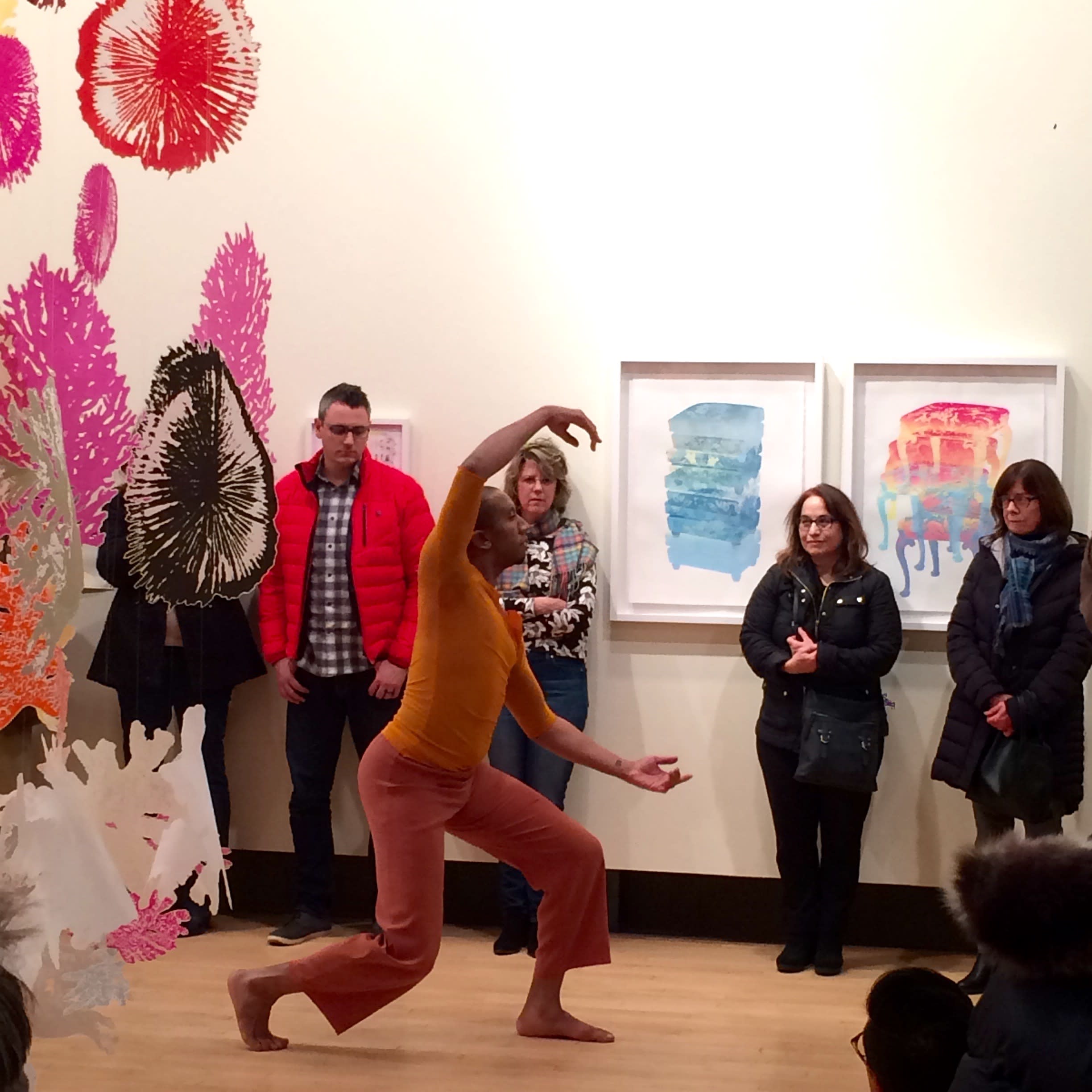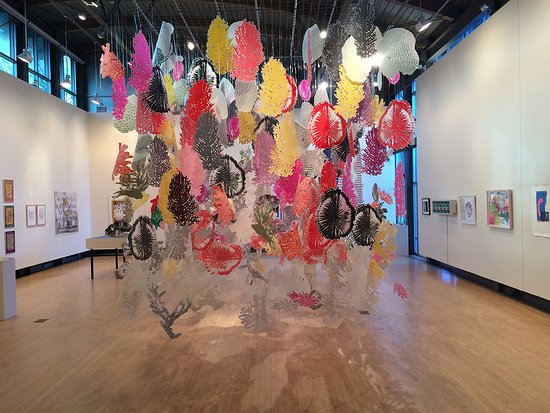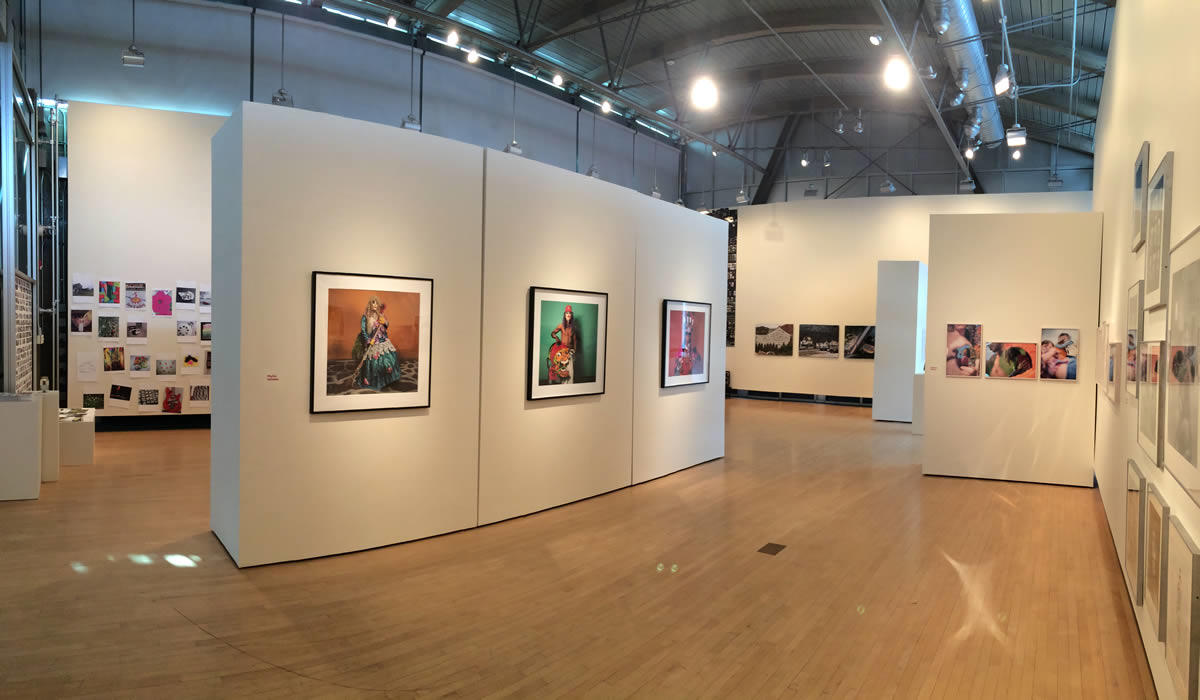





The end of the academic year means student art exhibits mounted by colleges to showcase the creative energies of their graduating seniors. Three years ago, we praised the playful and insightful designs for edible food-like substances created by Meredith Kill and Annemarie Dolfi, two 2016 graduates of the Sage College of Albany included in the 12th Annual Bachelor of Fine Arts Exhibition at the Sage Colleges’ Opalka Gallery.
Meredith Kill’s Packaging Parody: Cereal Series made viewers think hard about the heavy-handed marketing of conventional breakfast cereals. And Annemarie Dolfi’s DO-NOTS similarly hit the mark on her artful send-up of sugary donuts, “A Grab N’Go Breakfast With NO Nutritional Value.”
This year’s 15th Annual Bachelor of Fine Arts Exhibition (through June 8th) includes compelling graphic art and design projects that hit the mark again for a viewer committed to the good food movement and mindful eating. Graduating senior Nyla Cortes’ Shaky Grinds Coffee is a well-designed fictional coffee brand that pokes fun at people’s addiction to coffee. Her choice for coffee flavors reflects how coffee for some people is like a drug: Morning Shot, Gateway Coffee, Blackout Beans, Black Bomber.
Tyler Frisbee, another Class of 2019 graduate of the college’s Graphic + Media Design program, pins the tail on the donkey with his trenchant creation, a soft drink company he branded Toxic Tonic. Frisbee explains what “inspired” his branding: “To stand out in the oversaturated market of carbonated beverages, research reveals that consumers are not only UNCONCERNED with the health impact of the chemicals and caffeine, but even enjoy the vague sense of danger they pose.”
With tongue firmly planted in cheek: Toxic Tonic flavors include Ebola Cola, Chernobyl Cherry, Code Blueberry. The creative nutritional labels all show that each colorful bottle contains a whopping 980 calories. Thank goodness, these are fictional drinks.
And Tyler Frisbee has another artful creation in the show, a short video called Bananimation, on a very serious matter. In a very watchable and lively 2 minute video, Frisbee provides a brief history of the banana, from its first appearance 10,000 years ago in Papua New Guinea to the potential extinction today of the industrial banana crop worldwide, due to a deadly fungus (the wilt fungus, Fusarum Oxysporum Cubense a/k/a FOC) which causes Panama Disease.
Back in the 1950s, Panama Disease wiped out the then dominant Gros Michel variety of banana. The Cavendish variety, in its place, spread world-wide, but now this variety is also no longer resistant to the deadly disease. (Nearly 99% of exported bananas and nearly half of total banana production worldwide is of the Cavendish variety.) Frisbee suggests that future generations may only be able to savor a chemically created banana flavor, first used in candy.
This is one grave matter. A recent article, The quest to save the banana from extinction (4/18/19), by Stuart Thompson, posted on Science X, a web-based science, research and technology news service, details the potential extinction of the banana.
Thompson writes that Panama disease, an infection that ravages banana plants, has been sweeping across Asia, Australia, the Middle East and Africa. He notes that “the disease threatens not only the livelihoods of everyone in this $44 billion industry, but also 400 million people in developing countries who depend on bananas for a substantial proportion of their calorie intake.”
Might Tyler Frisbee make his must-see 2 minute Bananimation available for viewing on You Tube? That would be a major public service: this information needs to be shared widely.
(Frank W. Barrie, 5/24/19)





